Breeder Blanket
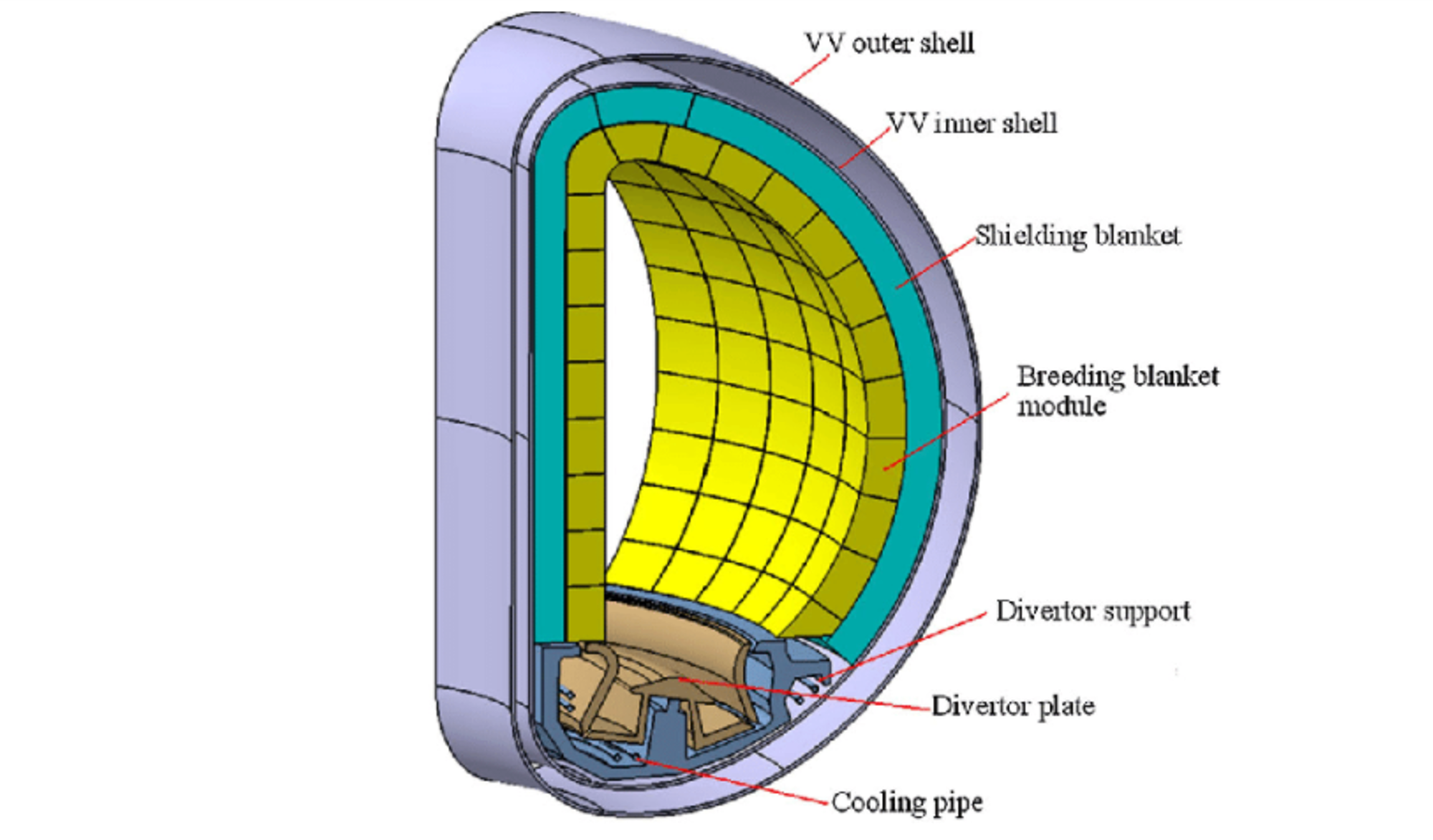
The breeder blanket system surrounds the plasma and has two critical functions: heat extraction and tritium fuel breeding. It is perhaps the most complex and challenging system in the whole fusion reactor due to the many demands of these two functions, including survival in an enormous neutron flux. Neutrons with energy 14 MeV from the fusion reactions in the plasma are stopped in the material of the blanket producing heat, which is extracted by a circulating fluid. The simplified figure below illustrates the dual purpose of the system; fluid that has extracted heat derived from the breeder blanket passes toward a turbine to generate electricity while a second circuit retrieves and purifies tritium for re-injection into the machine.
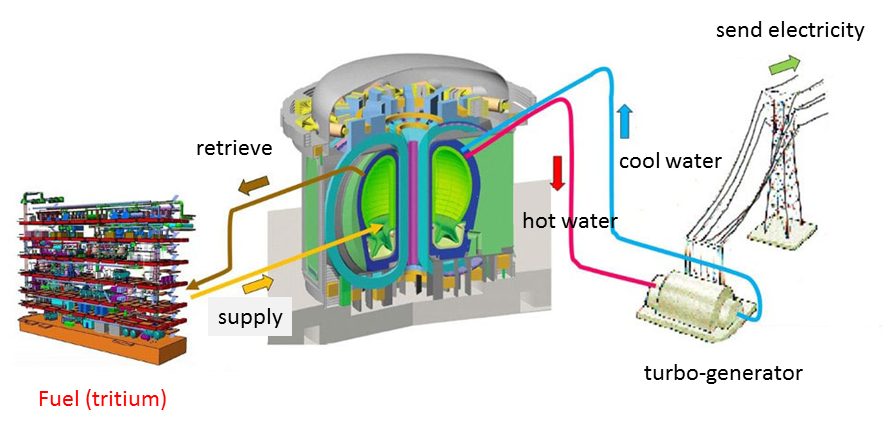
Simplified illustration of the dual functions of breeder blankets: heat extraction and tritium breeding.
Nuclear Physics of Tritium Breeding
Lithium, which has two stable isotopes 6Li (7.5%) and 7Li (92.5%), is used in the breeder blankets to produce of tritium via the reactions:

where the first reaction emits energy and the second absorbs it, favouring the use of the isotope 6Li.
Beryllium is another component of some breeder blanket designs as a neutron multiplier used to give a higher tritium output. One neutron interacting with beryllium gives two neutrons out, via the reaction:

Lead is also used as neutron multiplier in some blanket concepts but due to its much lower reaction threshold energy, Be yields better enhancements than with equivalent amount of Pb.
The illustration below shows the full series of reactions from fusion, via neutron multiplication to tritium breeding.

Sequence of reactions from fusion in plasma to tritium regeneration in breeder blanket with a beryllium neutron multiplier.
The big question is how many tritium nuclei are regenerated for one fusion reaction on average at the end of the reaction series. The value of this is the Tritium Breeder Ratio (TBR) and in practice it is likely to have a maximum value about 1.15. The figure below summarizes the inherent breeding capacity for 2 metre-thick breeder blankets with no structural material and no "external" neutron multiplier. "Internal" neutron multiplier options are included. The plot show TBR as a function of the energy gain in the reaction series.
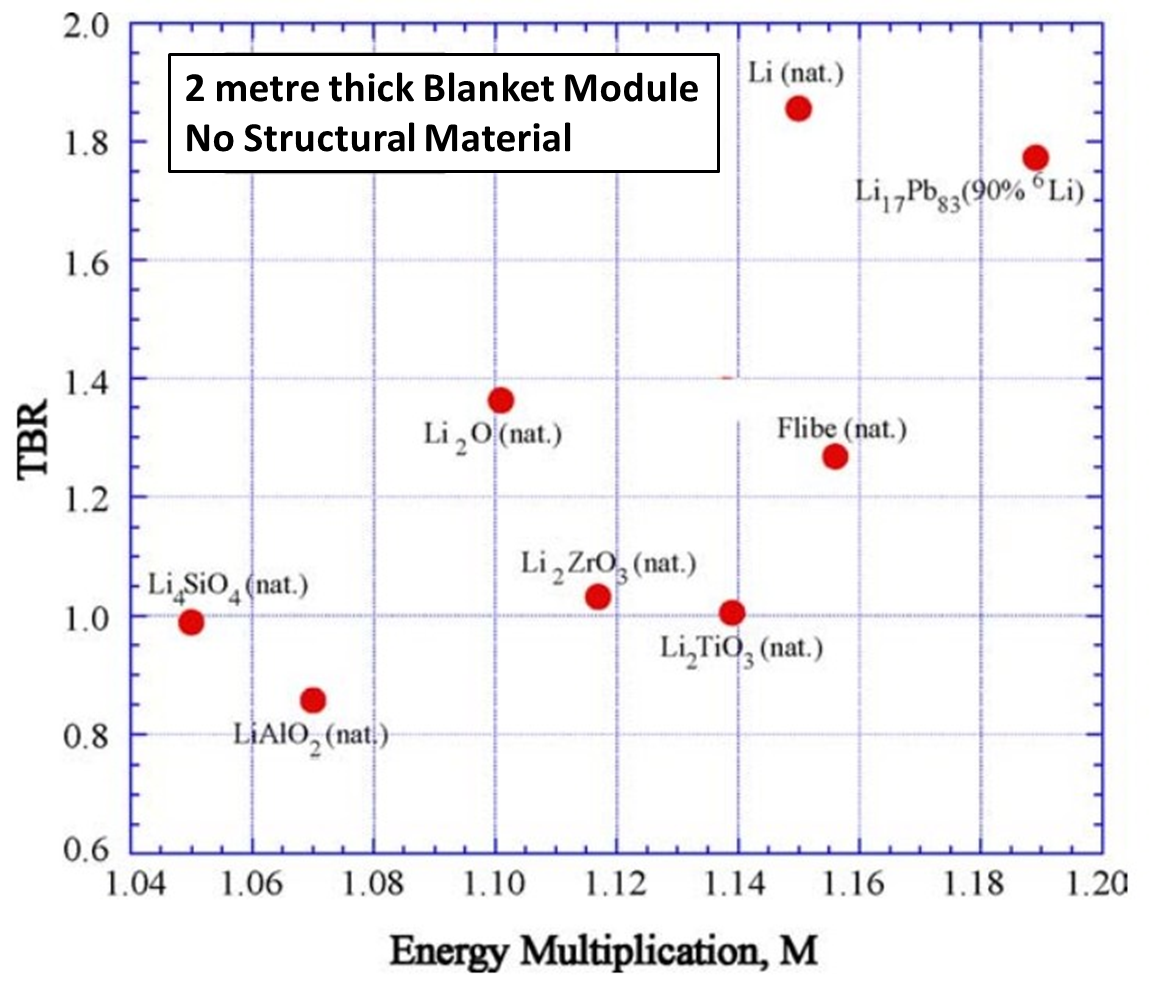
Tritium breeding potential of candidate breeding materials without structure in a 2 m-thick blanket. The plot show Tritium Breeding Ratio (TBR) against the corresponding energy multiplication factors. From, Sawan & Abdou (2006).
The breeders can be divided into three groups according to their breeding potential. The first group includes liquid Li and LiPb with the largest breeding potential. The second group contains Li2O and Flibe with medium breeding potential. With these breeders, the structure content needs to be minimized and/or a moderate amount of neutron multiplier should be added. The third group includes several ceramic solid breeders, such as Li2ZrO3, Li2TiO3, Li4SiO4, and LiAlO2, which have poor breeding potential and need a substantial amount of neutron multiplier to achieve adequate breeding. Enriching the lithium in the isotope 6Li does not always help the breeding. Breeders with natural Li provide the highest TBR except for LiPb.
The addition of structural material in practical breeder blankets reduces the TBR by factors of up to 30%. Further reductions in practical TBR, result from gaps in breeder blanket coverage caused by the entry ports into the vacuum vessel. With all factors, estimates are that the overall TBR will be in the range 1.05-1.15.
Technology of Breeder Blankets
After 40 years of research and development on breeder blanket technologies, many different concepts have been developed with different materials and principles of operation. The major technologies being currently pursued are liquid metal concepts, ceramic breeder concepts and molten salt concepts. Abdou et al. (2015) provides a detailed review of breeder technologies.
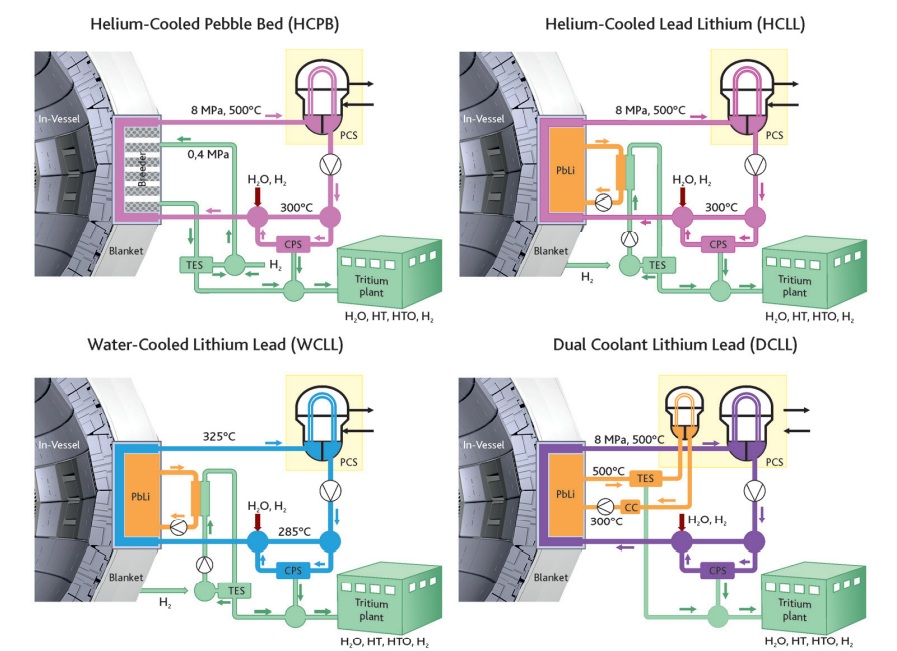
Main Breeder Blanket concepts studied, showing flow circuits. Circulating fluids: helium (purple); hydrogen (green); liquid lead-lithium (orange); water (blue). Primary Cooling System (PCS), Tritium Extraction System (TES), Coolant Purification System (CPS).
For both ITER and EU-DEMO, decisions have been taken to focus on two technologies:
- Helium-Cooled Pebble-Bed (HCPB) with lithiated ceramic and beryllium pebbles as breeder and neutron multiplier, respectively, and helium purge gas as tritium carrier.
- Water-Cooled Lithium-Lead (WCLL) which uses liquid Pb-16Li as a breeder, neutron multiplier and tritium carrier.
The Lithium-Lead blanket systems have the possibility for higher tritium breeding ratios but the liquid metal has the complication of serious corrosion. The Pebble-Bed blanket may have less safety risks and is shown in the figure below.
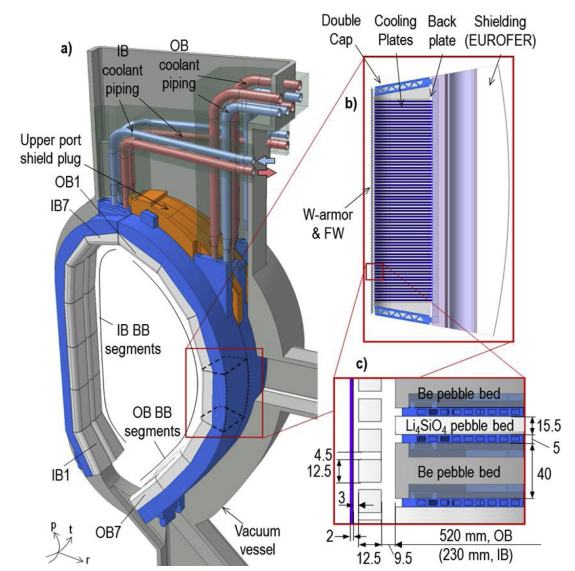
HCPB Breeder Blanket in EU-DEMO
The final choice of the breeder blanket technology involves many considerations:
- thermal power conversion efficiency
- pumping power
- power handling capabilities of the blanket first wall
- structural material mechanical properties under neutron irradiation
- neutron shielding for outer components
- achievable tritium breeding ratio
- breeder tritium extraction
- tritium permeation into materials
- chemical reactivity
- design feasibility
- safety
This choice is completely critical for a fusion reactor, and it seems very necessary to have dedicated test facilities, beyond ITER, to enable the right decisions as discussed on the page Essential Test Facilities.